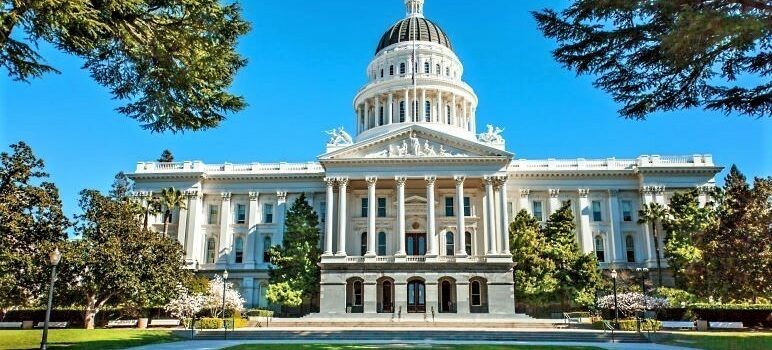Redistricting — the redrawing of maps for congressional, legislative and local seats — happens every ten years after the Census. Its goal? To make sure everyone is represented equally.
In 2008, California voters took redistricting for state offices away from the Legislature — which often drew maps to the advantage of elected officials or one political party — and gave the power to an independent commission. In 2010, voters added congressional maps to the commission’s duties. One of the cardinal rules that voters set: Consider diversity, including abiding by the Voting Rights Act.
The track record of the Citizens Redistricting Commission is mixed on that score. Statewide, Latinos make up 30% of the voting age population, but are a majority in just 19% of the 173 congressional and legislative districts, according to an analysis released this month by the Public Policy Institute of California.
That’s only a slight increase from the 15% under the old maps. Asian Americans are nearly 15% of the population, but a majority in just one district, while there is still no district where African Americans are the majority.The commission plans to release preliminary maps for 52 U.S. House districts and 120 state Assembly and Senate districts by Nov. 15 and has until Dec. 27 to submit its final districts so they can be used for the June 2022 primaries.
Between 2012 and 2020, the commission’s new districts largely succeeded in helping to add elected officials of color in California, according to a study by the USC Schwarzenegger Institute: The number of Latinos and Asian Americans elected to Congress doubled, and the numbers of Latino, Black and Asian American legislators also increased, compared to election results from the maps drawn by the Legislature after the 2000 census.
This round of redistricting is the first under a new state law that prioritizes keeping “communities of interest,” including ethnic enclaves, together for city and county districts. (That was already the case for congressional and legislative districts.) The 2019 FAIR MAPS Act also requires public input at every step of the process, so across California, local advocacy groups proposed their own maps.
Even these advocates say it’s impossible to take partisanship out of the process entirely. And this time around, the priority on diverse representation — and the fight for political power — is also being complicated by several factors:
- For the first time ever, California is losing a congressional seat. Experts say it will likely be carved out of Los Angeles County, where the population grew more slowly than the rest of the state. And that could set up a conflict between Latino and African American advocacy groups.
- The challenges of conducting the 2020 Census during the pandemic, and decisions made by the Trump administration, may have resulted in undercounting African Americans at significantly higher rates than usual. Facing delays, the Census Bureau has extended into early next year a follow-up door-to-door survey to check possible undercounts, NPR reports.
- And a sped-up redistricting timeline due to the delay of census data means less time for all involved to come up with proposed maps and state their case.
Sameea Kamal is a reporter with CalMatters.


identity politics leads to poverty and dependence
political equity NEVER results in income or wealth equity, frequently the opposite, because it is said economic inequity that delivers the voters
I worked for the US Census Bureau collecting data (on the streets/in the neighborhoods) for the 2010 Census. Just from watching from my home this time, I can tell you this last census count was nothing like the last one. It cannot possibly be accurate. In 2019 a census worker went to EVERY house at least one time, in person. The first time we went out we made sure there were actual housing units for EVERY address…you would be surprised how things can change from one 10 year period to the next. Census workers were EVERYWHERE. This past collection time where were they? I have a PO Box, not one piece of mail came to me from the Census Bureau, and not ONE person came to my door. I didn’t even get the Census Survey. Finally, a few days prior to the deadline a man showed up to tell me I had to go online to fill out the info. What happened to people like me only without computers???? The info they wanted was minimal, at best. The whole thing was “dummy downed.” I sat many times in 2019 in people’s homes helping them fill out their questionnaire for the 2010 Census. I know the difference between THAT questionnaire and the one I filled out online for the 2020 Census. I would bet good money on the “fact” many people were NOT counted.
Normal people expect something like this, adjusted for the major mountains.
https://bdistricting.com/2010/CA/
It’s not legitimate for government to engage in racism, including with districting.
Yes, we know, that means it’s essential in today’s progressive, even woke state.
DOWN the state continues to go.
Districts should be drawn by computers, not by commissions. An algorithm should be used that will produce districts as compact as possible with equal populations. Period.
No attention should be given to ethnicity, economic level, nor any other demographic.
No. The controlling party will Gerrymander districts as much as possible to limit representation of constituents that support the opposition (even if they are a minority in a majority failing state).
Just keep counting and you will get to the number you like ?
Just keep counting and you will get to the number you like ?
So it looks like it will be a food fight to see who gets representation between the African-Americans and Latinos in LA. I’m sure glad that there are no whites involved.
Drawing up districts by race, now what could be more Antebellum than that. Is that the Stars and Bars I see on the Big Bear Flag.